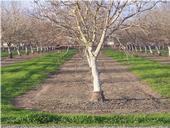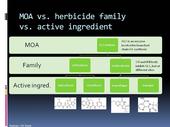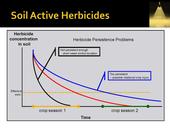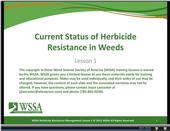- Posted By: Brad Hanson
- Written by: Kurt Hembree, Ryan Allen, Curtis Rainbolt, Jim Mueller et al., Richard Smith and Larry Bettiga, Emilio Laca et al., and others

Today I thought I'd put in a plug for the California Weed Science Society (CWSS) annual meeting to be held January 23-25, 2012 in Santa Barbara. Information on the meeting can be found in the October newsletter at: http://www.cwss.org/PDF/CWSS_Fall_2011_Newsletter.pdf and links to the Program and Registration can be found at: http://www.cwss.org/. The main CWSS page also has information on a new Photo Contest, the Student Paper and Poster Contest, the Student Scholarship Program, and Awards and Honors presented to students and members last year.
Also, I've attached a link to the
- Author: Brad Hanson

When talking about chemical weed control, a lot of different terms are used to describe the chemicals and application techniques being used. Some are terms are pretty straight forward while others are a little more specific or specialized. I thought it might be a good time to run through a few commonly used terms. Feel free to add (via comments) any important terms that I miss and I’ll try to edit them in over time.
Preemergence (or preemergent) herbicides. Herbicides that are applied before the target weed germinates and emerges. Many, but not all, preemergence herbicides have little activity on existing vegetation. Instead, they act on the roots or shoots of newly germinated seeds – often killing the...
- Author: Brad Hanson

Residual or soil applied (ie. preemergent or PRE) herbicides can provide many benefits to weed managers. In contrast to foliar-applied (postemergent) herbicides that only affect the weeds present at the time of the application, residual herbicides persist in the soil and have activity on weeds that germinate after the application. Depending on the chemistry of the specific herbicide, the rate applied, weed spectrum in the field, and environmental conditions, weed control may last for several weeks or months.
When performance problems arise with residual herbicides, they usually take the form of either unexpectedly short or unexpectedly long residual activity. As illustrated in the line diagram below, our goal with residual...
- Posted By: Brad Hanson
- Written by: WSSA press release

The Weed Science Society of America (WSSA) recently released a series of free online training modules on understanding and managing herbicide resistance. The target audience for the five modules is consultants/field advisors/agronomists but I think any weed managers could benefit from them.
According to David Shaw, the chairman of the WSSA Herbicide Resistance Education Committee "When farmers have a better understanding of herbicide resistance and how to manage it, they can adopt proactive management programs that delay or mitigate the evolution of herbicide-resistant weeds".
The five training modules include:
Lesson 1:...
- Author: Brad Hanson
... well, a new name and new uses for a familiar product anyway.
I received a notification today that Dow AgroSciences received California registration for TrellisTM herbicide for use in grapes and tree nuts.
The active ingredient in Trellis, isoxaben, may be familiar to folks who have used Gallery T&V herbicide which was registered in 1998. This is a residual herbicide that will provide several months of control for a fairly broad range of broadleaf weeds (minor activity on some grasses). For more info, go to the UC Weed RIC "herbicide susceptibility chart" and scroll down to isoxaben (Gallery) in the herbicide window or read the Trellis label...


